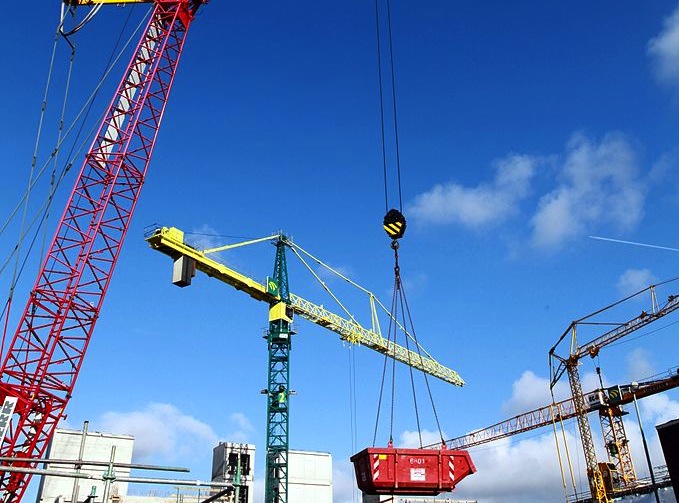Uncertainty about government spending clouds an otherwise positive economic outlook among 59 middle market construction firms polled recently by GE Capital.
Those firms—which average 652 employees and $144.6 million in annual revenue—are particularly confident about U.S. and local markets, though less so about the global arena. Only 12% of those polled said they were “extremely confident” about the condition of global economies, versus 21% who felt the same way about the U.S. economy, and 42% who liked what they were seeing about their local economies.
The firms’ confidence reflects their financial performance. Seven of 10 respondents reported improvements in their companies’ financials as of September 2014, versus fewer than three in five polled last March.
However, while half of the construction firms surveyed said they were hiring more people, the number was slightly down from the 57% who were hiring last March. The good news is that nearly half of the firms polled—47%—expect the construction industry to expand through September 2015, during which construction-related employment is expected to increase by 5.4%.
The survey’s respondents see the energy sector as holding out the greatest potential for future construction projects and hiring. Office and residential projects are also expected to be stronger. But a lot of these firms’ optimism seems contingent on public works spending, which “continues to have an immense impact on the industry and is a key consideration in expenditure decisions,” according to GE Capital.
Another factor that is likely to impact construction firms’ profitability is the direction that healthcare costs take. One-third of respondents are anticipating an increasing cost structure. Still, the respondents expect their margins to grow by average of 3.7% over the next year, which greatly exceeds the 0.2% growth that respondents were projecting last March.
GE Capital produces its quarterly surveys in cooperation with the National Center for the Middle Market, a multiyear partnership between GE Capital and Ohio State University’s Fisher College of Business. For more information about construction and other industries, visit gecapital.com/cxosurvey.
Related Stories
Architects | Sep 6, 2018
S/L/A/M Collaborative completes merger with L.A.-based firm
The healthcare sector is one of Frank Webb Architects’ strengths.
Giants 400 | Sep 6, 2018
What's happening at 89 design firms
The latest developments at 89 of the nation's largest architecture and architecture/engineering (AE) firms.
Architects | Sep 6, 2018
Little details, big questions: Occupancy planning 101 for healthcare facilities
Transitioning into a new hospital is no easy feat and daily tasks can have a huge impact.
Architects | Aug 14, 2018
AIA takes a firmer stand on making schools safer with better design
The Institute urges the formation of a federal clearinghouse for best practices, and wants security-related design to be eligible for grants.
Architects | Aug 9, 2018
The convergence of product design and architecture
Great design is born out of simplicity, purity, timelessness, unobtrusiveness and intuitiveness.
Architects | Aug 1, 2018
Client experience as competitive advantage for AEC firms
Clients are looking for solutions to their business problems from collaborative advisors. They’ve come to expect a higher level of service and detail than what was provided in the past.
AEC Tech | Jul 24, 2018
Weidt Group’s Net Energy Optimizer now available as software as a service
The proprietary energy analysis tool is open for use by the public.
Building Owners | Jul 17, 2018
Are we facing a new era in Foreign Direct Investment?
The construction industry is already feeling the effects of the recent tariffs, not only with higher steel and aluminum prices, but with higher prices on Canadian lumber.
Codes and Standards | Jul 17, 2018
NIMBYism, generational divide threaten plan for net-zero village in St. Paul, Minn.
The ambitious redevelopment proposal for a former Ford automotive plant creates tension.

















